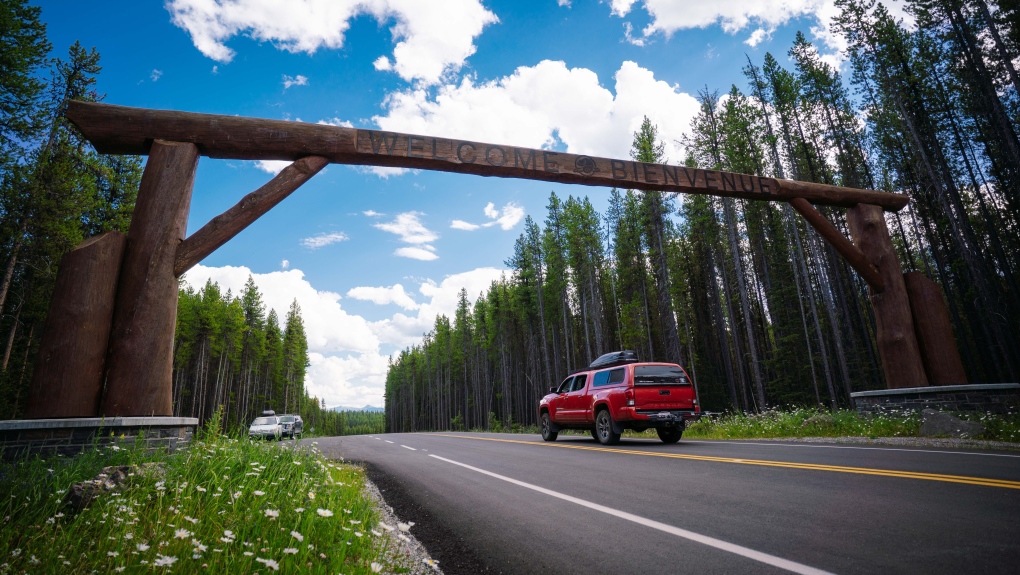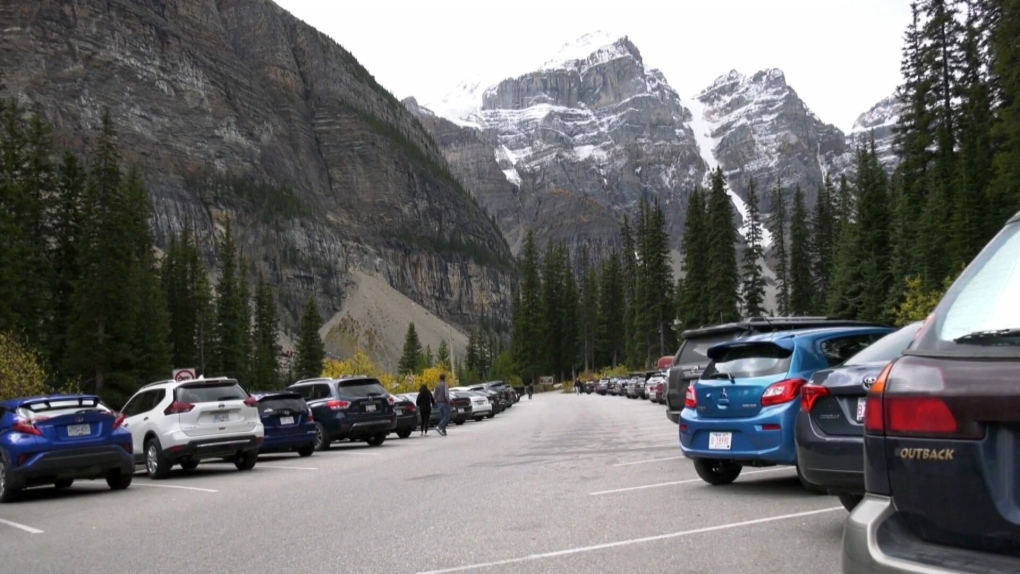Parks Canada has 'solid vision and direction' to improve travel in the Bow Valley
 A vehicle drives under the welcome sign on Highway 1A also known as the Bow Valley Parkway in Banff National Park in 2020 as seen in this handout image. THE CANADIAN PRESS/HO-Parks Canada
A vehicle drives under the welcome sign on Highway 1A also known as the Bow Valley Parkway in Banff National Park in 2020 as seen in this handout image. THE CANADIAN PRESS/HO-Parks Canada
A new report, based on feedback from residents in Banff and the Bow Valley is expected to help shape the way Parks Canada can help develop access to the region in the years ahead.
The agency released the document, which was developed by gathering nearly 200 comments during a public and Indigenous engagement process, this week.
Parks Canada hopes the recommendations in the report will help reduce traffic, cut down on emissions and improve the visitor experience in Banff National Park, officials said.
"The report is recommending many of the things that the Town of Banff and other stakeholders and residents of the Bow Valley have been suggesting/requesting/proposing over the years," Parks Canada said.
"(It) provides a good start and direction for Parks Canada but there is still lots of work to do."
Most of the comments gathered during the study have to do with a low-cost mass transit strategy designed to bring visitors from Calgary to Banff.
Parks Canada said there is also a real thirst for daily, year-round service from the city to Banff, as well as Canmore and Lake Louise, with the possibility of more trips during peak seasons.
To help move riders, the agency also heard that a "unified booking system" was critical.
"Parks Canada must be willing to be open to conversations and active partnership with both Roam and the Town of Banff to seek new solutions and more effective transit options. These organizations have been very proactive, and Parks Canada needs to catch up," the report reads.
The report also highlighted a number of concerns with a transit plan, focused mainly on restricted access for specific user groups and a negative impact on parking.
"Other commenters noted that before starting to limit parking areas, shuttles and other modes of transportation must be well established and effective. Communication with visitors and locals will be key in most of these strategies," the report said.
Other concerns included pricing, with suggestions that the park experience may become too expensive for some users.
"A common theme expressed was that transit should not be an added charge, but rather included in the park pass as is the case in some U.S. national parks."
Other users were also worried that the recommendations could impact the "seize the day" approach enjoyed by hikers and other users.
"Engagement with user groups such as hikers will be important in developing future strategies," the report said.

Parks Canada says there were some concerns about a number of recommendations that had been missed, such as a lack of Indigenous consultation, the concerns of the local population and what infrastructure would be needed to develop the plan properly.
While the report did not get into specifics about what sort of ground transportation would be included in its strategy, it does say that "aerial transit was mentioned but not included as a true mass transit opportunity."
"All over the world new examples of aerial transit exist and solve important transportation problems. They should not be overlooked as effective ways to reduce traffic," Parks Canada said.
In its summary report, the agency says it is working toward many of the recommendations laid out in the expert panel's report.
"Parks Canada remains committed to exploring sustainable green transportation solutions in national parks, which is demonstrated through our ongoing investments in sustainable mass transit to, from and within Banff National Park," the agency wrote.
"Since the release of the expert advisory panel’s final report, Parks Canada has already made strides toward a more sustainable future for the park, and begun to implement some of the recommendations made by the expert panel."
For example, through its work, Parks Canada says it is now more cost effective for a family of four to take shuttles to Lake Louise and Moraine Lake rather than pay for parking.
Next year, a visitor information program survey will gather data to develop a clearer picture on patterns of use, motivations and behaviours to guide site-specific strategies.
Full details can be found in the online report.
CTVNews.ca Top Stories

Canadian government announces new border security plan amid Donald Trump tariff threats
The federal government has laid out a five-pillared approach to boosting border security, though it doesn't include specifics about where and how the $1.3-billion funding package earmarked in the fall economic statement will be allocated.
Fall sitting bookended by Liberal byelection losses ends with Trudeau government in tumult
The House of Commons adjourned on Tuesday, bringing an end to an unstable fall sitting that has been bookended by Liberal byelection losses. The conclusion of the fall sitting comes as Prime Minister Justin Trudeau's minority government is in turmoil.
Police chief says motive for Wisconsin school shooting was a 'combination of factors'
Investigators on Tuesday are focused on trying to determine a motive in a Wisconsin school shooting that left a teacher and a student dead and two other children in critical condition.
14 dead and hundreds injured in magnitude 7.3 quake in Vanuatu. Some people are trapped in rubble
A magnitude 7.3 earthquake that struck off Vanuatu killed at least 14 people, injured hundreds more and caused widespread damage across the South Pacific island nation, rescuers and officials said early Wednesday. Rescuers worked through the night trying to reach some people yelling under the rubble.
Prosecutors charge suspect with killing UnitedHealthcare CEO as an act of terrorism
The man accused of killing UnitedHealthcare's CEO has been charged with murder as an act of terrorism, prosecutors said Tuesday as they worked to bring him to a New York court from from a Pennsylvania jail.
'She will not be missed': Trump on Freeland's departure from cabinet
As Canadians watched a day of considerable political turmoil for Prime Minister Justin Trudeau and his government given the sudden departure of Chrystia Freeland on Monday, it appears that U.S. president-elect Donald Trump was also watching it unfold.
The world's busiest flight routes for 2024 revealed
If you think planes have got fuller and the skies busier over the past year, you’d be right — especially if you live in either Hong Kong or Taipei.
NASA's 2 stuck astronauts face more time in space with return delayed until at least late March
NASA's two stuck astronauts just got their space mission extended again. That means they won’t be back on Earth until spring, 10 months after rocketing into orbit on Boeing’s Starliner capsule.
Sex-ed group deemed 'inappropriate' by Tory government returns to N.B. schools
A sexual-education group whose presentations were deemed "clearly inappropriate" by the previous New Brunswick Progressive Conservative government has been cleared to return to the province's schools.
































